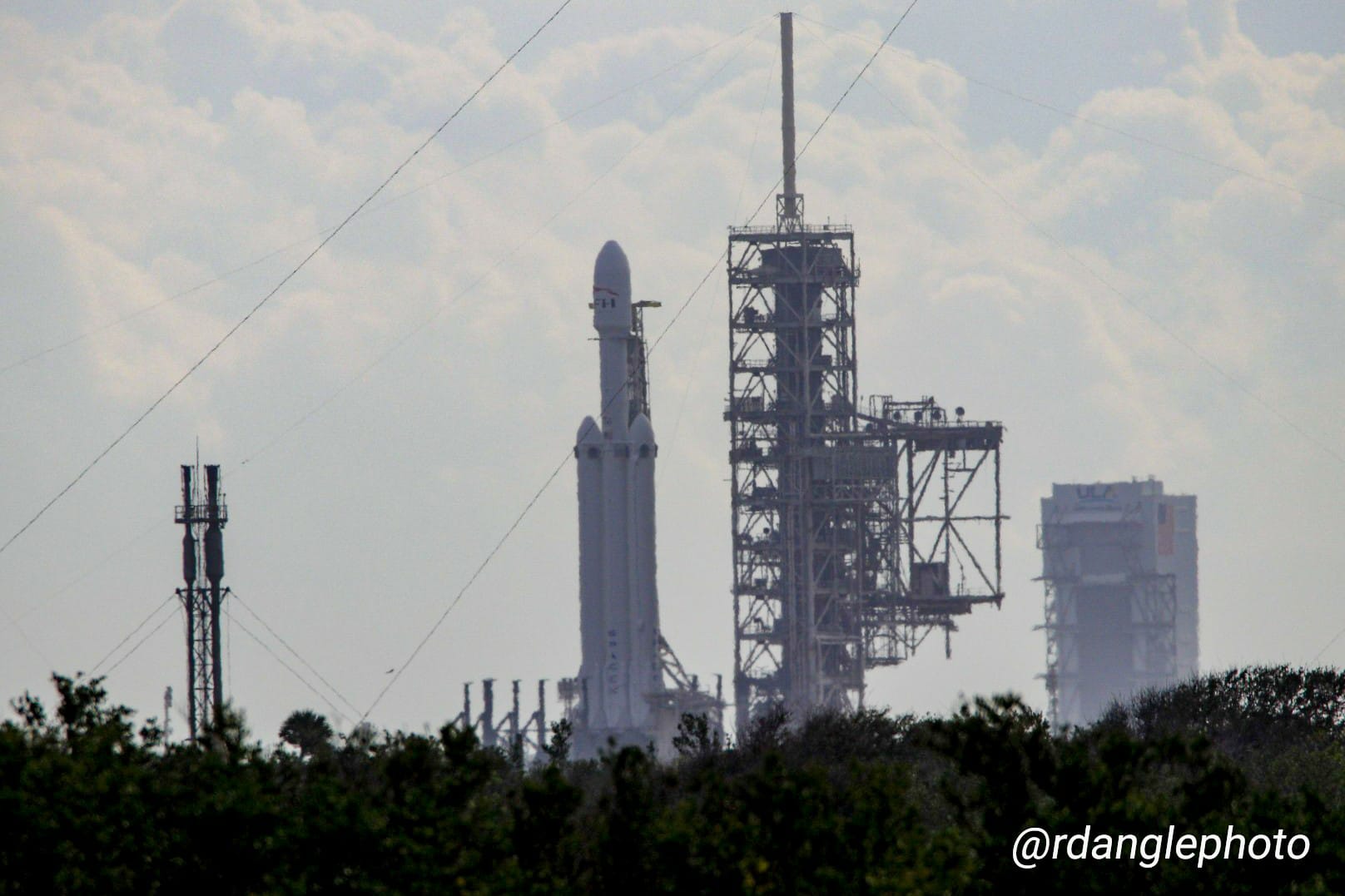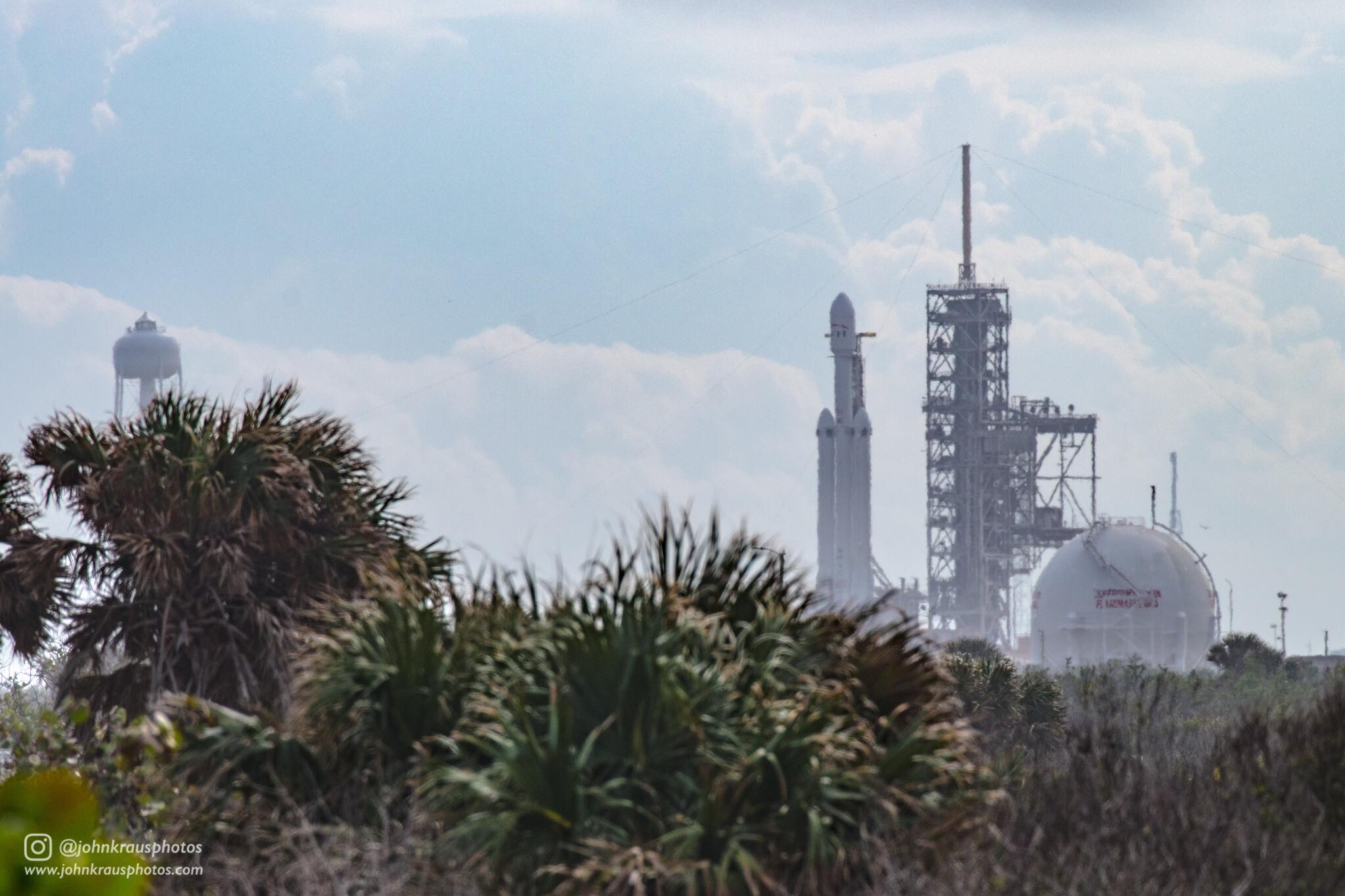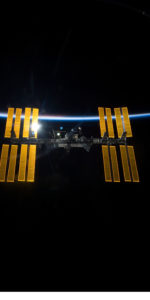
One of the most highly-anticipated rockets in history rose atop its launch pad for the first time today, December 28, 2017, as SpaceX’s triple-barreled Falcon Heavy went vertical in launch position for testing prior to its inaugural flight.
Engineers are conducting fit checks on the vehicle, before clearing the way for a practice countdown / wet dress rehearsal and static test fire of the new heavy-lift launcher in the first or second week of January, where all 27 of its engines light as if it’s actually time to launch.
All three of the rocket’s cores underwent individual test firing at SpaceX’s proving grounds in McGregor, TX some time ago, but further testing is needed on the fully integrated rocket ahead of static test fire and launch from 39A. Nobody has ever fired up 27 engines on a launch pad before.
Elon Musk’s original Tesla Roadster is onboard too, headed for a billion year elliptic Mars orbit while playing “Space Oddity”.
The company originally wanted Falcon Heavy flying missions beginning in “late 2013 or 2014”, but numerous delays, two exploded rockets (CRS-7 and AMOS-6), and greater than expected engineering challenges in developing Falcon Heavy all contributed to a now, much later expected debut of early 2018 for the new booster.
Given the delays and challenges, Musk has set the bar a bit low for the rocket’s first demo flight. “I hope it makes it far enough away from the pad that it does not cause pad damage,” said Musk this summer. “I would consider even that a win, to be honest.”

Both side boosters are already flight-proven, having previously landed after launching the Thaicom-8 and NASA CRS-9 missions, but the vehicle’s central core is new, built specifically to withstand the unique stresses and environment of launching with three cores and 27 engines.
“With the ability to lift into orbit over 54 metric tons (119,000 lb)–a mass equivalent to a 737 jetliner loaded with passengers, crew, luggage and fuel–Falcon Heavy can lift more than twice the payload of the next closest operational vehicle, the Delta IV Heavy, at one-third the cost,” says the company on its website, comparing their heavy-lifter to ULA’s, their main rival.
At liftoff, all 27 engines will produce as much thrust as eighteen jumbo 747 aircraft at full power, or 5.13 million pounds of thrust. That will make it the most powerful U.S. rocket since the Saturn V, which launched astronauts to the moon during NASA’s historic Apollo era, and the most powerful rocket currently operating in the world.
– AmericaSpace has reached out to SpaceX for comment, and will update this if and when they provide further information.
– Our thanks to Richard Angle for the lead image, follow him Instagram @rdanglephoto.
Stay with AmericaSpace for full coverage of Falcon Heavy’s Debut!
.
FOLLOW AmericaSpace on Facebook!
.
Missions » FH Test »





Feels almost like May 25, 1966 when Saturn 500F was rolled out for the First Time and November 9, 1967 when Saturn 501 was launched with Apollo 4 atop it.
GO FALCON!!!!!!!!!!
Go SpaceX and Go Falcon Heavy!!! This just keeps getting better with every step.
SpaceX can get it done! Good luck and God speed Falcon Heavy!
“Nobody has ever fired up 27 engines on a launch pad before”
I counter that statement with the Soviet N-1 with 30 images fired up on a launch pad about 50 years ago.
Zappa,
“I counter that statement with the Soviet N-1 with 30 images fired up on a launch pad about 50 years ago.”
….It didn’t make it to orbit as in 0 for 4 attempts…So if Musk makes it …he will be the first…Right?
You’re completely in the Right, Tracy!!!!!